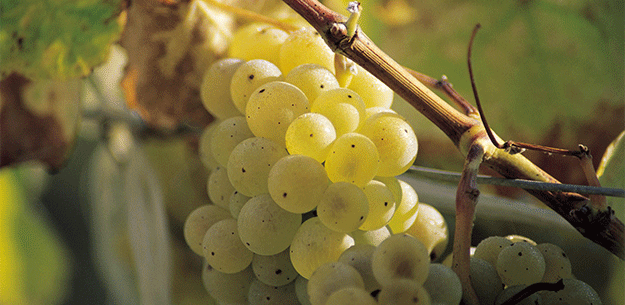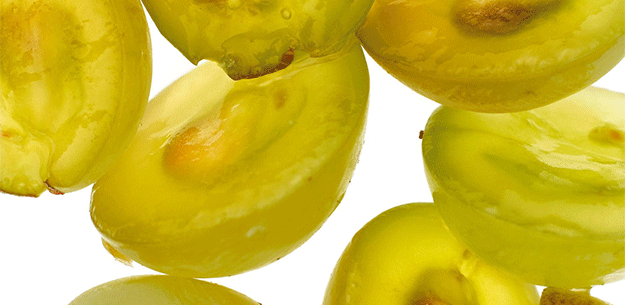.png.transform/rendition-xs/image_image%20(1).png)
Wine Grapes from Spain: Spanish White Grapes
The tendency to make single-variety wines, dominant in Spain for decades, has led to an increased interest in the identification and authenticity of native varieties. In accordance with current legislation, only those varieties that are found in the Spanish Registry of Commercial Grape Varieties can be cultivated in this country. In total, there are more than a hundred majority varieties grown in Spain, distributed throughout the country and present in the different Designations of Origin as authorized varieties.

Airén is the most widely cultivated grape variety in Spain for winemaking. This grape is highly resistant to drought and plagues, which is one of the reasons why it was planted so extensively after the phylloxera blight. Originally from central Spain, it has traditionally been mixed with other varieties, due to its extremely neutral aromas. It is currently being used to produce more flavorful young wines, thanks to new fermentation systems. These wines give off fruity aromas of apples and bananas and are soft and light on the palate, with little acidity.
The second most-cultivated white grape variety is Viura, as it is called in La Rioja, Castile-León and Aragón. This multi-faceted variety can be used to make both still and sparkling wines. The former are pale yellow in color, have floral aromas, and are crisp and balanced on the palate. This variety, which has a low propensity for oxidation, is apt for fermentation and aging in oak. In Catalonia, Viura is known as Macabeo and, together with Xarel.lo and Parellada, it is one of the region’s three most important varieties. These three varieties are considered the base for Cava, Spain’s most important sparkling wine, which is made using the traditional, or Champenoise method, and protected by DO Cava.
Verdejo is the most recent Spanish native grape variety to arrive on the international market. Originating in Castile-León and specifically in DO Rueda (Valladolid), Verdejo is perfectly adapted to the gravelly soils and rocky, brownish-gray terrain characteristic of this area. It was traditionally used to make “rancid” wines (wines aged through oxidation), but it reaches its greatest potential in young white wines. These fruity wines have herbaceous notes, outstanding acidity and the bitter finish that is characteristic of this grape. This variety boasts excellent structure and personality, which makes its wines ideal for barrel aging, imparting them with touches of vanilla and the toasted aromas of the wood, which mingle perfectly with the notes of fruit and hay that are typical of Verdejo.
Galicia, in northern Spain, has a wide range of native grape varieties, the most important of which is Albariño, the main variety DO Rías Baixas. The vines are trained onto canopies in order to avoid possible diseases brought on by the area’s heavy rainfall. Albariño wines are some of the most aromatic in the world. Their bouquets are complex and varied, with notes of stone fruits and floral aromas reminiscent of jasmine and freshly cut grass. The wine is structured and unctuous on the palate with well-balanced acidity and alcohol. These wines age perfectly and can be stored and consumed for several years. Another of the most important grape varieties from Galicia is Godello, the principal grape in DO Valdeorras.
Wines made from Godello are ideal for short-term aging in oak, which turns them into complex wines that are intense on the palate, while retaining the fruity aromas that are characteristic of this grape.
The varieties produced in the Canary Islands should be mentioned for their unique characteristics. Listán Blanca is the islands’ most cultivated variety. It produces wines that have curious hints of ripe grapes and mountain herbs. The grapes infuse these wines with deep, mentholated undertones, particularly when they are grown on dry and difficult terrain.
Palomino Fino was one of the first Spanish white grape varieties to gain acclaim abroad thanks to the historic prestige of Sherry wines. This led to the expansion of its mass cultivation to other regions. This variety is originally from Andalusia, where it is cultivated throughout the region of Jerez in white albariza (chalk, limestone, clay and sand) soil. This wine is key to the elaboration of Andalusia’s fortified wines, which include Finos, Manzanillas, Amontillados and Olorosos.
Pedro Ximénez is the most prolific grape variety in DO Montilla-Moriles, in Córdoba. It is also the name of one of the world’s most important natural sweet wines. The grapes are dried in the sun, naturally concentrating their sugar content. The wines made from these dried-out grapes are then typically aged using the traditional system of criaderas (nurseries) and soleras (floors). The wines are deep mahogany in color, with intense aromas of raisins, figs and caramel. On the palate they are ample, unctuous, dense and sweet.
In accordance with current legislation, only those varieties that are found in the Spanish Registry of Commercial Grape Varieties can be cultivated in this country.
Almudena Martín Rueda / @ICEX


- Spanish White Wine Grapes 1
- Spanish White Wine Grapes 2

